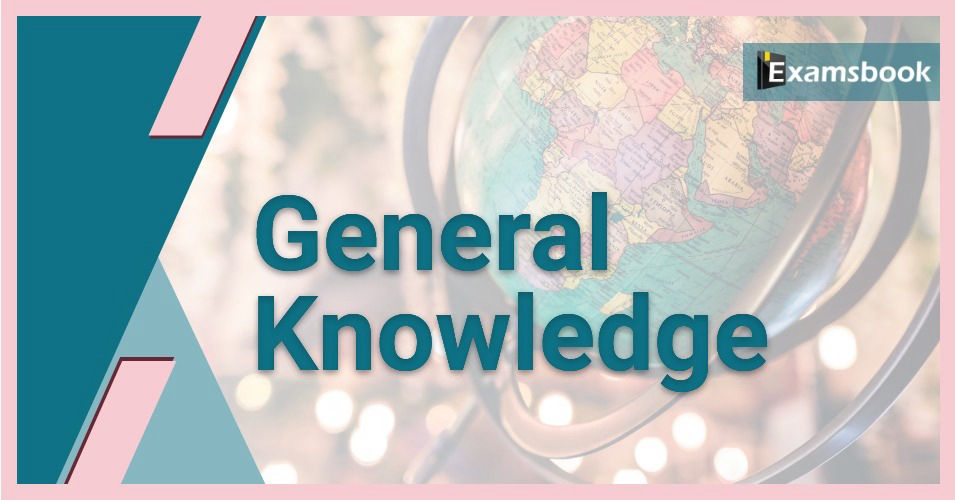General Knowledge (GK) 2023-24: GK Questions, Topics, Mock Test, Practice Quiz

General GK Quiz
Q : Which of the following exercised the most profound influence in framing the Indian Constitution?
(A) British Constitution
(B) US Constitution
(C) Irish Constitution
(D) The Government of India Act, 1935
Correct Answer : D
Explanation :
The Government of India Act, 1935 exercised the most profound influence in framing the Indian Constitution. The Constituent Assembly, which was tasked with drafting the Indian Constitution, drew extensively from various sources, including the Government of India Act, 1935, as it provided a framework for federalism, provincial autonomy, and other constitutional principles.
A federal structure for India was first put forward by the :
(A) Act of 1909
(B) Act of 1919
(C) Act of 1935
(D) Act of 1947
Correct Answer : C
Which type of writ is not issued under Indian constitution-
(A) Mandamus
(B) Prohibition
(C) Injunction
(D) Certiorari
Correct Answer : C
Explanation :
There are five writs issued by courts in India- Habeas corpus, Certiorari, Mandamus, Prohibition, and Quo warranto.
The Unitary System of Government possesses which of the following advantages?
(A) Fundamental Rights
(B) Directive Principles of the State Policy
(C) Fundamental Duties
(D) Emergency Provision
Correct Answer : B
Explanation :
The Unitary System of Government, where power is concentrated at the central level, ensures uniformity, efficiency, and quick decision-making in governance. This system allows for streamlined implementation of policies and laws without regional variations, leading to administrative simplicity. However, the Directive Principles of State Policy, while essential, are distinct principles in the Indian Constitution, guiding social and economic policies, irrespective of the system of government in place.
What was the basis for constituting the Constituent Assembly of India?
(A) The Resolution of the Indian National Congress
(B) The Cabinet Mission Plan, 1946
(C) The Indian Independence Act, 1947
(D) The resolutions of the Provincial/State Legislatures of the Dominion of India
Correct Answer : B
Explanation :
The Constituent Assembly of India was constituted based on the Cabinet Mission Plan of 1946. The plan was proposed by the British government and aimed at devising a constitutional framework for India's independence. It laid the foundation for the formation of the Constituent Assembly, which played a crucial role in drafting the Constitution of India, ultimately leading to India's independence in 1947.
The Government of India Act, 1935 was based on:
(A) The principle of federation and parliamentary system
(B) The principle of succession of the British Indian provinces
(C) Acceptance of the idea of a Constituent Assembly to draft a constitution
(D) None of these
Correct Answer : A
Explanation :
The Government of India Act, 1935 was based on the principle of federation and introduced a parliamentary system of government. It provided for the establishment of a federal structure for India, where powers were divided between the central (federal) government and provincial governments. It also introduced the concept of bicameralism at the federal level and established a parliamentary system, laying the foundation for India's governance until it gained independence in 1947.
Who among the following had moved the objective resolution which formed the basis of the Preamble the Constitution of India in the Constituent assembly on Dec. 13, 1946?
(A) Sardar Vallabhbhai Patel
(B) Acharya J.B. Kripalani
(C) Jay Prakash Narayan
(D) Pandit Jawahar Lal Nehru
Correct Answer : D
Explanation :
Pandit Jawaharlal Nehru moved the Objective Resolution in the Constituent Assembly of India on December 13, 1946. The Objective Resolution laid the foundation for the Preamble of the Constitution of India and outlined the fundamental principles that would guide the framing of the Indian Constitution.
Which one of the following is not an element of the State?
(A) Population
(B) Land
(C) Army
(D) Government
Correct Answer : C
Explanation :
The statement "Army" is incorrect. The army is, in fact, an essential element of the State. The elements of the State typically include population, territory, government, and sovereignty. The army, or the military, is part of the government's structure and is responsible for national defense, making it a crucial component of the State apparatus.
Statement I: The Constitution of India is a liberal Constitution
Statement II: It provides Fundamental Rights to Individuals
(A) Both the statement are individually true and statement II is the correct explanation of statement
(B) Both the statements are individually true but statement II is not the correct explanation of statement
(C) Statement I is true but statement II is false
(D) Statement I is false but statement II is true
Correct Answer : A
Explanation :
both statements are individually true, and statement II is the correct explanation of statement I. The Constitution of India is indeed a liberal Constitution, emphasizing democratic values, individual rights, and freedoms. Statement II clarifies that it achieves this liberal character by providing Fundamental Rights to individuals, which are essential elements of a liberal democratic framework, ensuring citizens' liberties and equal protection under the law.
India is a republic because
(A) It is democratic country
(B) It is a parliamentary democracy
(C) the head of the state is elected for a definite period
(D) All of these
Correct Answer : C
Explanation :
India is a republic because the head of the state, the President, is elected by an electoral college for a fixed term of five years. This democratic process ensures that the highest office in the country is not hereditary but held through periodic elections, reflecting the nation's commitment to representative governance and equality.



